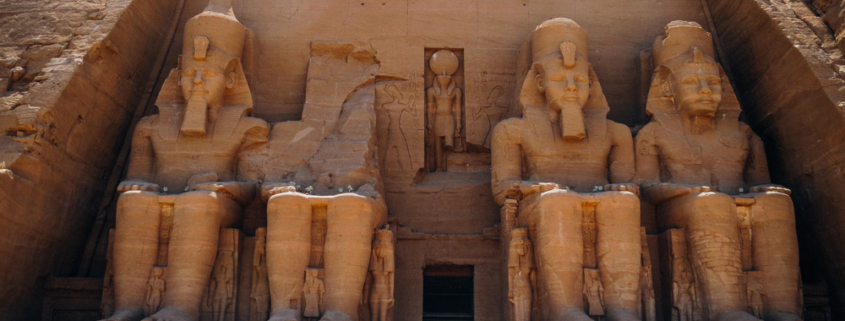Abu Simbel temple
Abu Simbel: Preserved Temples of Ancient Egypt
In the heart of southern Egypt, on the west bank of the Nile, lies the ancient site of Abu Simbel. Once the southernmost point of pharaonic Egypt, it is now home to two magnificent temples built by Pharaoh Ramses II in the 13th century BCE.
Monumental Statues of Ramses
The main temple boasts four colossal statues of Ramses, each measuring over 60 feet in height. These impressive sculptures, carved directly into the sandstone cliff, depict the pharaoh in a seated position, flanked by smaller figures of his family. The southern statues bear inscriptions left by Greek mercenaries serving in Egypt, providing insights into the early development of the Greek alphabet.
Interior of the Main Temple
The main temple is dedicated to the sun gods Amon-Re and Re-Horakhte. It extends deep into the cliff, consisting of three grand halls adorned with numerous statues of Ramses and intricate paintings depicting his military victories. A unique feature of the temple is that twice a year, the sun’s rays penetrate the entire length of the temple, illuminating the shrine in its innermost chamber.

Smaller Temple of Nefertari
Adjacent to the main temple is a smaller one dedicated to Ramses’ queen, Nefertari. This temple is adorned with statues of both the king and queen, measuring 35 feet in height. It is dedicated to the goddess Hathor, the patron deity of love, music, and dance.
Preservation Efforts
In the mid-20th century, the construction of the Aswan High Dam threatened to submerge Abu Simbel. A massive international effort was launched to save the temples. Between 1963 and 1968, engineers and scientists disassembled both temples, block by block, and reconstructed them on higher ground, over 200 feet above their original location. This remarkable feat of engineering preserved these ancient wonders for generations to come.
UNESCO World Heritage Site
In recognition of its exceptional historical and cultural significance, Abu Simbel was designated a UNESCO World Heritage site in 1979, along with other nearby monuments such as Philae. Today, it remains a testament to the architectural prowess of ancient Egypt and continues to inspire awe and wonder among visitors from around the world.
If you would like one day to visit this amazing temple check this link here for more details.
Written by AWT updated June 2024





